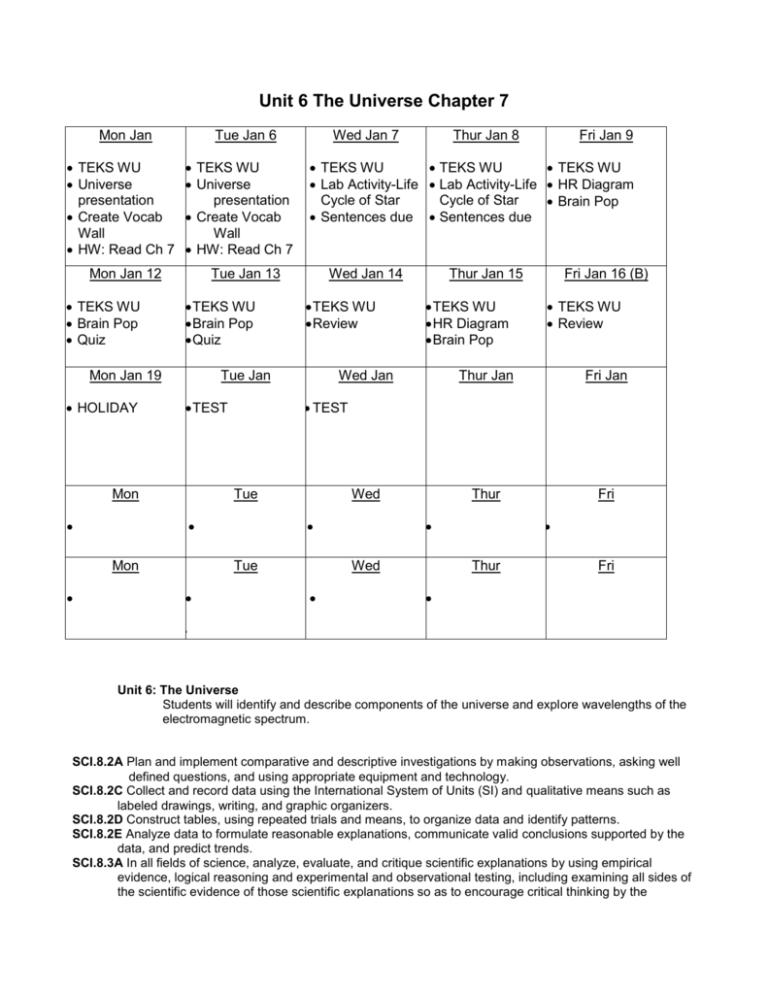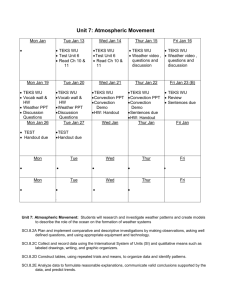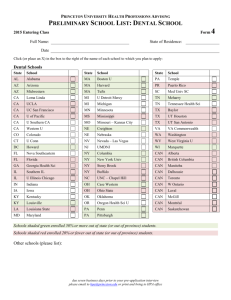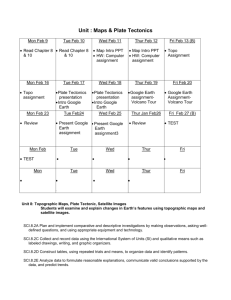Unit 6 The Universe Chapter 7
advertisement

Unit 6 The Universe Chapter 7 Mon Jan TEKS WU Universe presentation Create Vocab Wall HW: Read Ch 7 Tue Jan 6 TEKS WU Universe presentation Create Vocab Wall HW: Read Ch 7 Mon Jan 12 TEKS WU Brain Pop Quiz TEKS WU Brain Pop Quiz Mon TEKS WU Review Wed Tue TEKS WU HR Diagram Brain Pop Fri Jan 16 (B) TEKS WU Review Thur Jan Fri Jan Thur Fri TEST Mon Fri Jan 9 Thur Jan 15 Wed Jan Tue Wed Jan 14 Tue Jan TEST Thur Jan 8 TEKS WU TEKS WU TEKS WU Lab Activity-Life Lab Activity-Life HR Diagram Cycle of Star Cycle of Star Brain Pop Sentences due Sentences due Tue Jan 13 Mon Jan 19 HOLIDAY Wed Jan 7 Wed Thur Fri Unit 6: The Universe Students will identify and describe components of the universe and explore wavelengths of the electromagnetic spectrum. SCI.8.2A Plan and implement comparative and descriptive investigations by making observations, asking well defined questions, and using appropriate equipment and technology. SCI.8.2C Collect and record data using the International System of Units (SI) and qualitative means such as labeled drawings, writing, and graphic organizers. SCI.8.2D Construct tables, using repeated trials and means, to organize data and identify patterns. SCI.8.2E Analyze data to formulate reasonable explanations, communicate valid conclusions supported by the data, and predict trends. SCI.8.3A In all fields of science, analyze, evaluate, and critique scientific explanations by using empirical evidence, logical reasoning and experimental and observational testing, including examining all sides of the scientific evidence of those scientific explanations so as to encourage critical thinking by the student. SCI.8.3B Use models to represent aspects of the natural world such as human body systems, and plant and animal cells. SCI.8.3C Identify advantages and limitations of models such as size, scale, properties, and materials. SCI.8.4A Use appropriate tools to collect, record, and analyze information as needed to teach the curriculum. SCI.8.4B Use preventative safety equipment. SCI.8.8A Describe components of the universe including stars, nebulae and galaxies, and use models such as the Herztsprung-Russell diagram for classification. SCI.8.8B Recognize that the Sun is a medium-sized star near the edge of a discshaped galaxy of stars and that the Sun is many thousands of times closer to Earth than any other star. SCI.8.8C Explore how different wavelengths of the electromagnetic spectrum such as light and radio waves are used to gain information about distances and properties of components in the universe. SCI.8.8D Model and describe how light years are used to measure distances and sizes in the universe. SCI.8.8E Research how scientific data are used as evidence to develop scientific theories to describe the origin of the universe.







